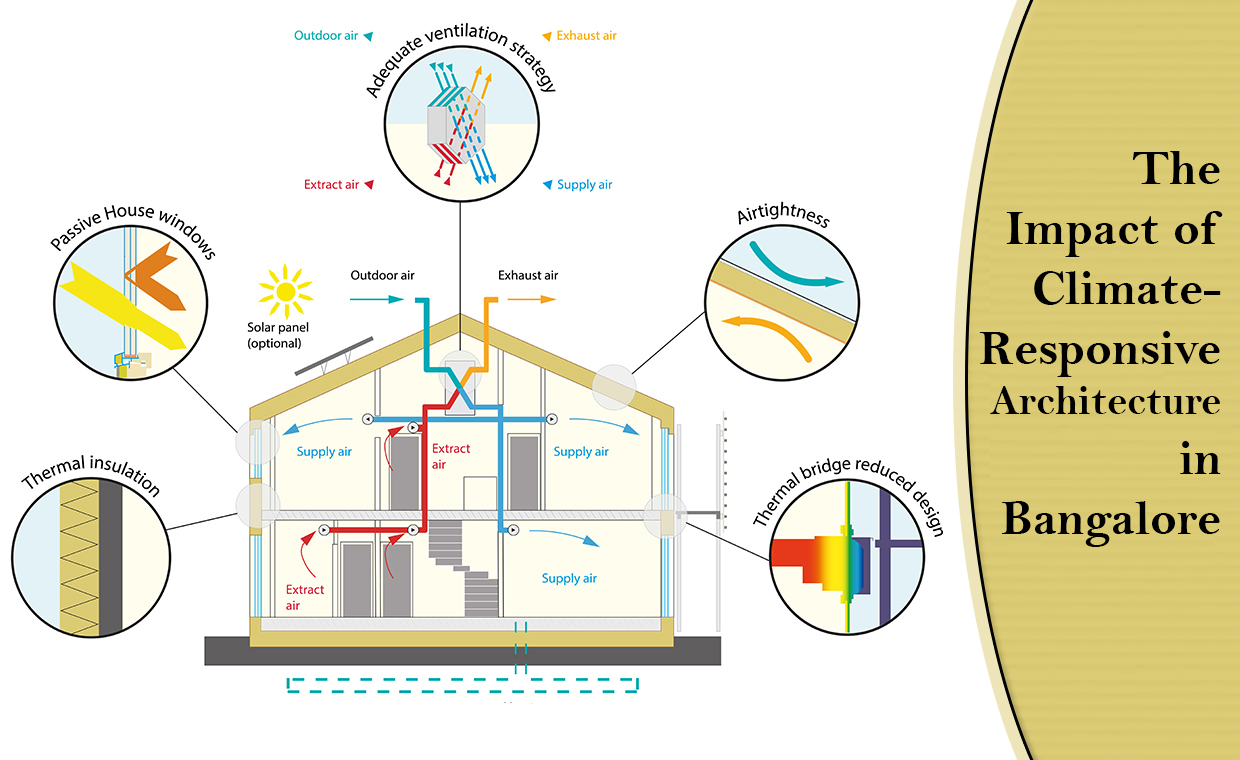The Impact of Climate-Responsive Architecture in Bangalore
Read latest blogs and articles from Housystan

The Information mentioned here was last updated on:
4/12/2025The Impact of Climate-Responsive Architecture in Bangalore
As climate change becomes a pressing issue worldwide, the city of Bangalore, known for its rapid urbanization and tech-driven growth, is turning to climate-responsive architecture to address its environmental challenges. This architectural approach aligns buildings and their surroundings with the local climate, balancing comfort, sustainability, and energy efficiency.
Understanding Climate-Responsive Architecture
- Verified Tenants/Buyers
- Unlimited Property Listing
- Zero subscription/charges fee
Climate-responsive architecture, often interchangeably referred to as sustainable architecture or green building design, is the art of designing buildings that respond to the local climate and environmental conditions. The core aim is to utilize natural resources effectively while minimizing ecological footprints.
Key Features of Climate-Responsive Architecture
1. Passive Solar Design: The strategic placement and orientation of buildings to maximize natural sunlight and warmth in winter, while minimizing heat during summer. This can reduce reliance on artificial heating and cooling systems.
2. Natural Ventilation: Incorporating features such as operable windows and cross-ventilation to allow fresh air circulation, reducing the need for air conditioning.
3. Use of Local Materials: Employing locally sourced materials not only cuts down transportation costs and emissions but also supports regional ecosystems.
4. Rainwater Harvesting: Capturing and storing rainwater for future use, critical in a city like Bangalore where water scarcity is a concern.
5. Green Roofs and Walls: Integrating vegetation into building design helps in thermal insulation, reduces heat island effects, and improves air quality.
Importance of Climate-Responsive Architecture in Bangalore
Combatting Urban Heat
Bangalore's urban landscape, often characterized by concrete high-rises and asphalt roads, contributes to the heat island effect, where urban areas become significantly warmer than their rural surroundings. Climate-responsive architecture helps mitigate this by:
- Incorporating Greenery: Introducing green spaces on rooftops and facades to absorb sunlight and cool down structures.
- Reflective Roofing Materials: Using materials that reflect rather than absorb sunlight, further reducing heat accumulation.
Enhancing Energy Efficiency
In a tech-driven city, energy consumption is at an all-time high. Climate-responsive buildings reduce energy use by:
- Reducing HVAC Dependency: Lowering dependence on heating, ventilation, and air conditioning systems through natural ventilation and thermal mass materials.
- Smart Design: Utilizing smart building technologies and automation to optimize energy consumption based on real-time data.
Notable Climate-Responsive Buildings in Bangalore
Infosys Campus
The Infosys campus in Bangalore is a prime example of how large corporations are leading the charge in sustainable architecture. The campus incorporates:
- Rainwater Harvesting Systems: Extensive rainwater harvesting setups that supply a significant portion of the campus's water needs.
- Energy-Efficient Design: Orientation of buildings to maximize natural light and reduce artificial lighting needs.
Bangalore International Airport
Bangalore's airport is not only a hub for international travel but also a model of climate-responsive design, featuring:
- Natural Light Utilization: Large glass facades and skylights that fill spaces with natural light.
- Water Management Systems: Facilities to treat, recycle, and reuse water throughout the airport.
Benefits for Residents and the Environment
Improved Living Conditions
Climate-responsive architecture significantly enhances comfort within urban dwellings, making them more resistant to temperature extremes:
- Indoor Air Quality: Enhanced by natural ventilation and reduced use of synthetic materials.
- Thermal Comfort: Better temperature regulation without excessive energy consumption.
Environmental Impact
By adopting these practices, Bangalore can reduce its carbon footprint significantly:
- Reduced Emissions: Lower energy consumption leads to fewer emissions from power generation.
- Biodiversity Conservation: Use of local and sustainable materials supports native ecosystems.
Technological Innovations Driving Change
The integration of technology within climate-responsive designs is essential. This includes:
- Automated Environmental Controls: Systems that adjust lighting, temperature, and airflow based on occupancy and weather conditions.
- Smart Metering: Enables real-time monitoring of energy consumption, helping to optimize usage.
Challenges and Future Prospects
Overcoming Barriers
Despite its benefits, climate-responsive architecture faces several hurdles:
- Initial Costs: Higher upfront investments for design and materials can be a deterrent.
- Lack of Awareness: Limited understanding among developers and the public about long-term benefits.
Moving Forward
Continued education and policy support can foster broader adoption of climate-responsive practices:
- Policy Incentives: Government incentives and subsidies for green buildings can encourage developers to invest in sustainable designs.
- Community Engagement: Educating the public about the benefits and importance of sustainable architecture is crucial for widespread acceptance.
In Conclusion
Exploring the role of climate-responsive architecture in Bangalore reveals a path toward more sustainable urban living. With a focus on integrating local environmental conditions into building designs, this architectural approach offers a viable solution to address the challenges of climate change and urbanization. As more cities take notice, the potential for widespread transformation grows, promising a greener and more sustainable future.